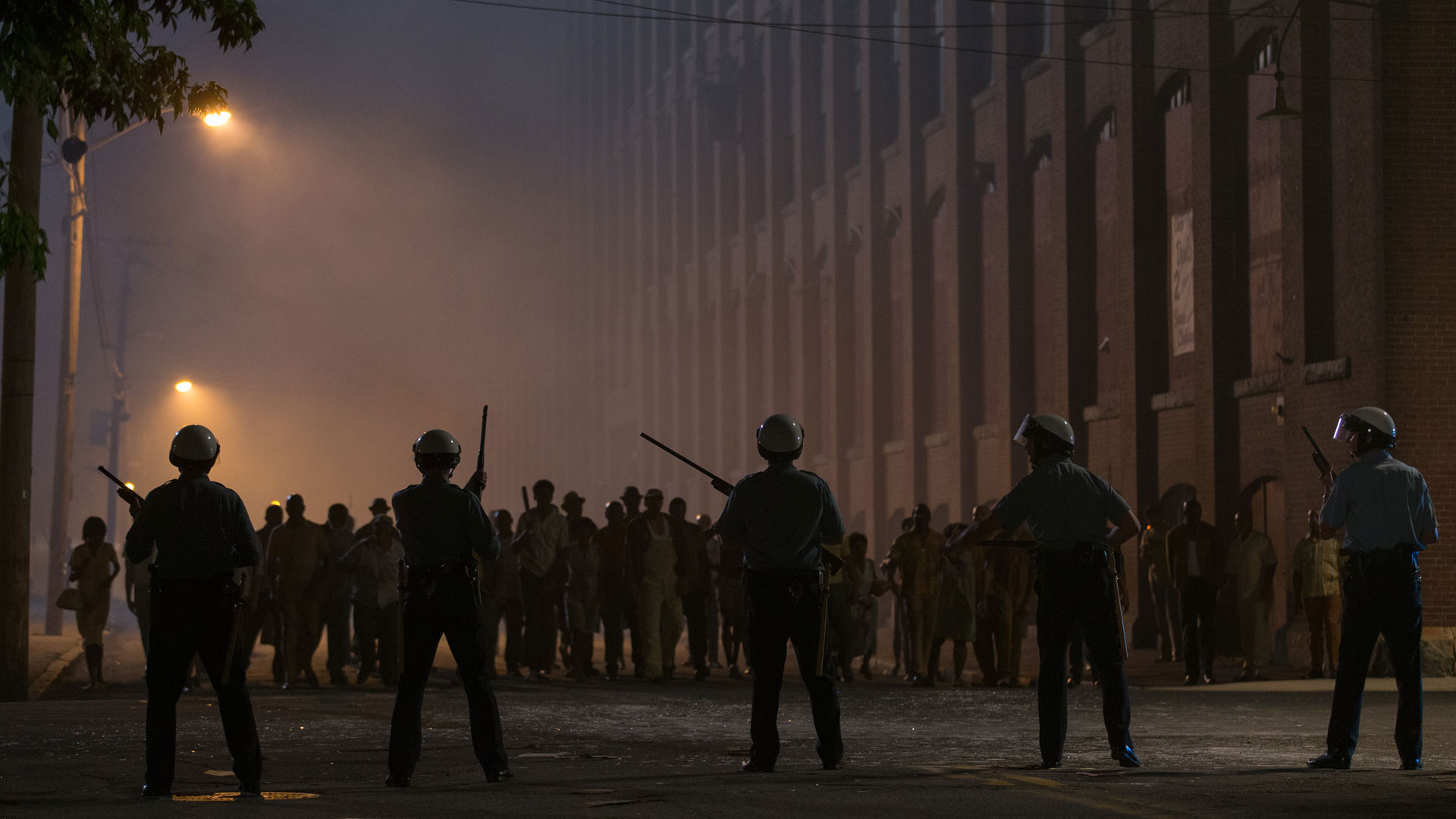The true story's layered elements — and its raw, visceral impact — made dramatizing the Algiers Motel incident authentically, while also pulling in the audience emotionally, a complex editing challenge.
Kathryn Bigelow’s new film, Detroit, dramatizes one of the most violent and least-known racially charged police brutality confrontations of the 1960s—the infamous Algiers Motel incident. Bigelow has been quoted as saying she was pursuing a sort of “journalistic style” of filmmaking in telling the story, richly taking advantage of cinematographer Barry Ackroyd’s constantly moving camera in a style evoking cinéma vérité. To edit reams of such material together in a cohesive and emotionally compelling fashion was no easy task. It fell on the shoulders of co-editors Billy Goldenberg, ACE, and Harry Yoon, who detailed their efforts to cut the film during a recent conversation with Studio Daily for the Podcasts from the Front Line series.
Goldenberg says Bigelow’s method of “finding the emotional story” during production gave the editorial team plenty of raw material to work with, but figuring out how best to weave the stories of different characters as they converged on the Algiers Motel was a particularly complicated job.
Audio-only version:
Subscribe: Apple Podcasts | RSS
“The great thing about Kathryn — the thing that makes it so great to be one of her editors — is that once she trusts you, she gives you tremendous creative freedom,” says Goldenberg. “We had to put it all together in a cohesive way to tell a visceral and tension-filled story.”
Goldenberg emphasizes that screenwriter Mark Boal wrote the piece so that there were a series of “handoffs” from the start, as viewers meet the initial characters, and then other principals, grappling with an unfolding riot happening all around them, before they all end up in the Algiers Hotel. There, spooked police, allegedly searching for a sniper, begin brutalizing some of the occupants in a highly emotional and graphic extended sequence. Following that foundational section, the movie continues with the aftermath of the terrible event.
“They all end up in the same place together after [the series of handoffs],” Goldenberg adds. “I think it is a really interesting way to tell a story where you get all the social context and emotional context, while doing it in a very non-traditional way in terms of telling how the riots started and spread. That handoff from character to character until we get to the Algiers makes the audience sort of lean in to the story maybe in a way they would not otherwise have done. You are challenging the audience to follow along in a way that I think was a really interesting storytelling device.”
His partner, Yoon, emphasizes that, along the way, the editors had to layer on “a physical reality — a physical continuity and reality that we needed to build as things were happening” in combination with “an emotional reality that I think evolved over time.”

Anthony Mackie in Detroit
Photo: Annapurna Pictures
“For example,” Yoon elaborates, “we quickly realized how essential it was to [have characters being held at gunpoint by police], although they were not allowed to say words to each other, to maintain a bond and a link. The looks [various characters] gave each other, because they were jointly going through this horrific experience and they needed to sort of check in with each other and get a bead on what one another was feeling, [were important]. Then, we would start to refine the emotional reality of the character relationships. So that was a really interesting challenge — coming together and finding those shots, combing through volumes of footage, just to find the right look for an [unspoken] check-in that we [needed] to maintain emotional continuity.”
Did you enjoy this article? Sign up to receive the StudioDaily Fix eletter containing the latest stories, including news, videos, interviews, reviews and more.










